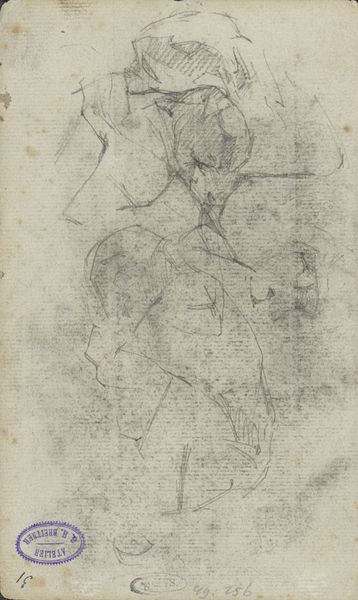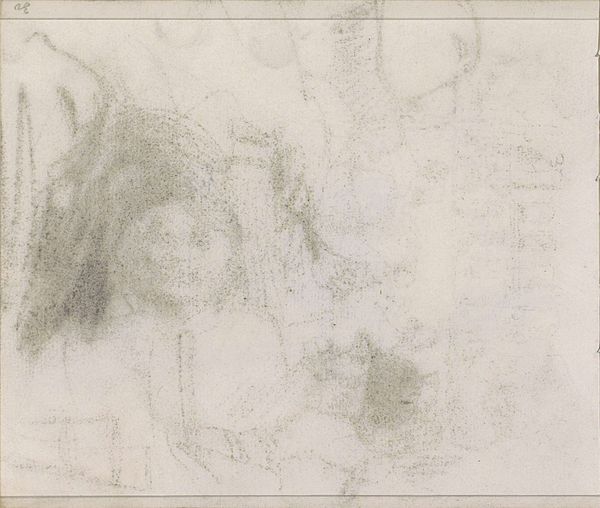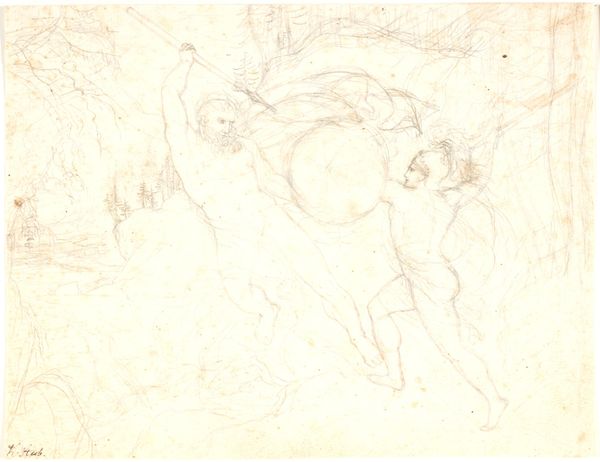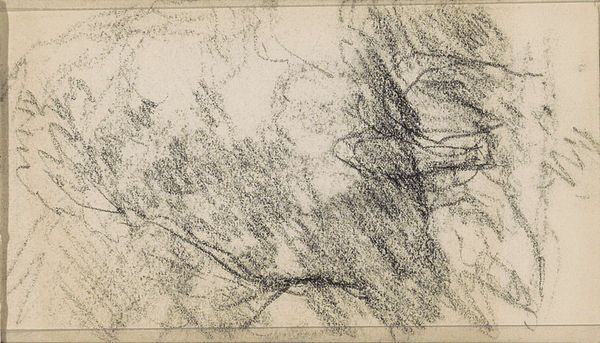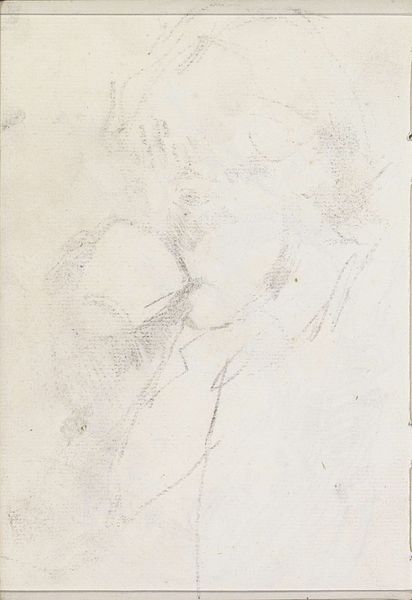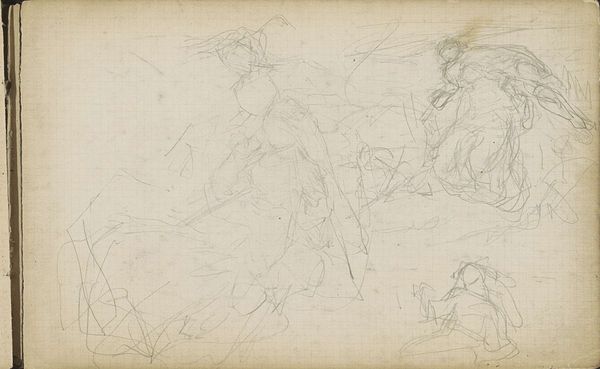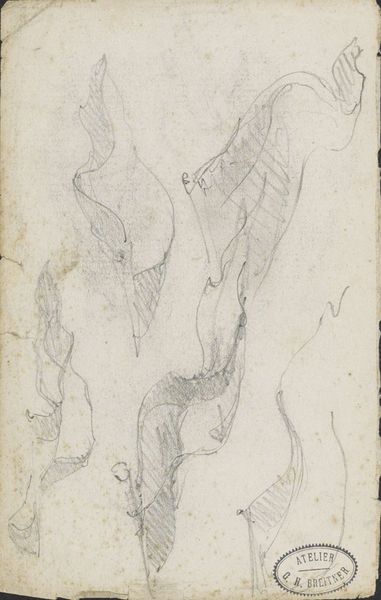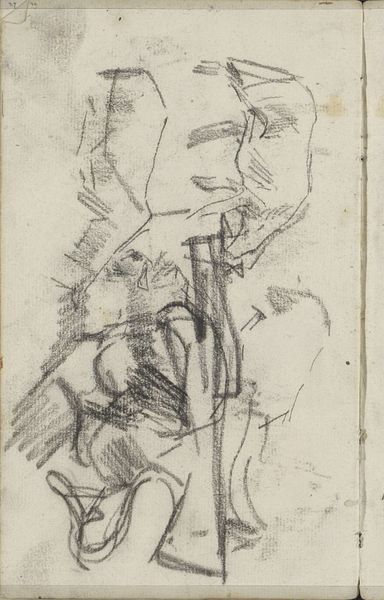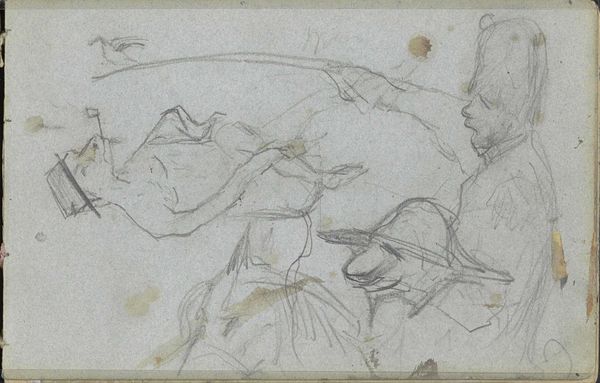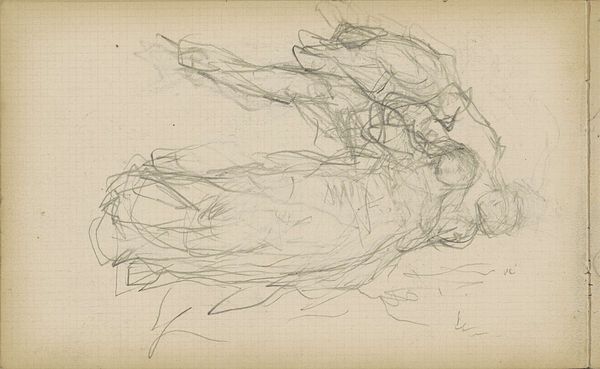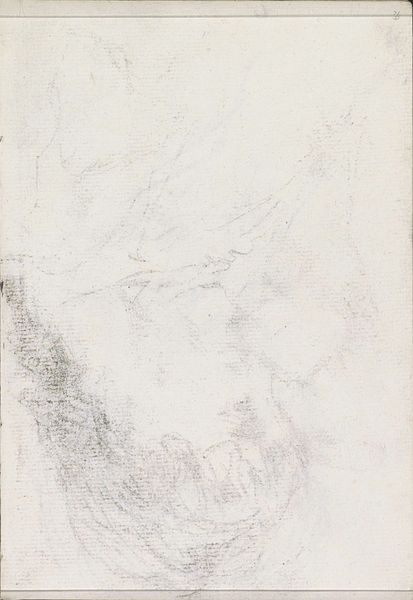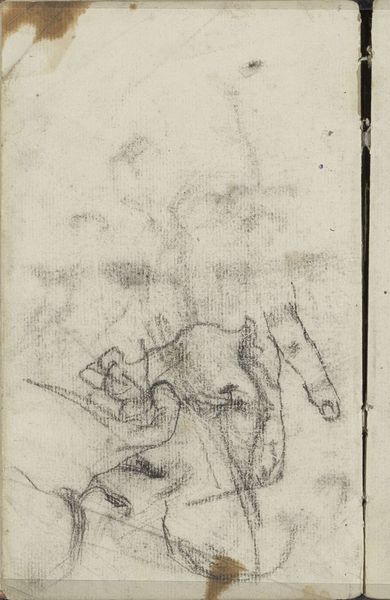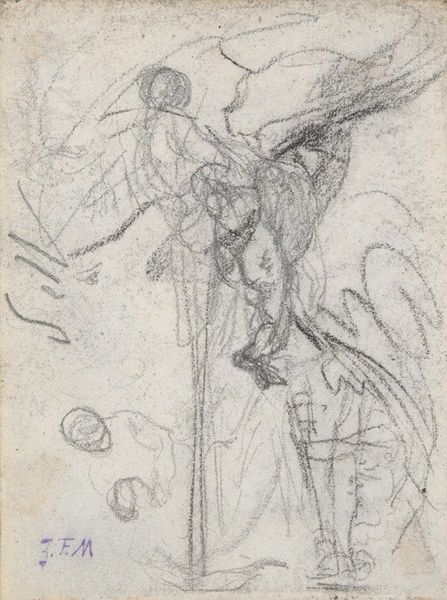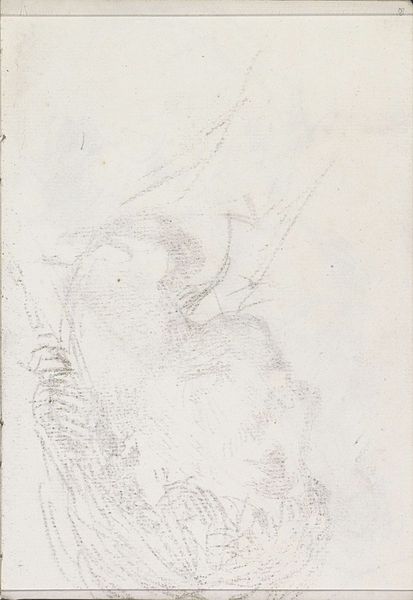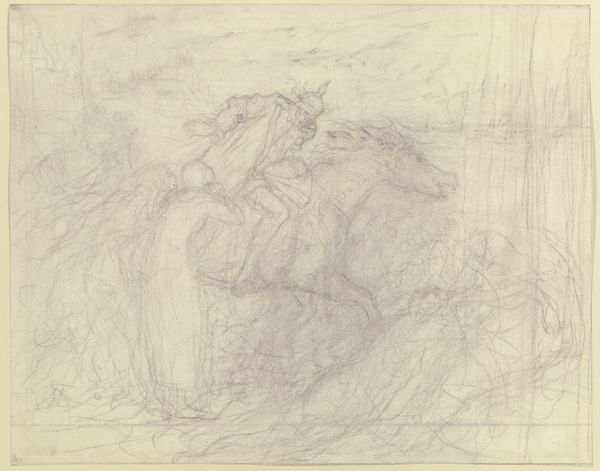
drawing, pencil
#
portrait
#
pencil drawn
#
drawing
#
figuration
#
text
#
sketch
#
pencil
#
line
#
surrealism
Copyright: Hans Bellmer,Fair Use
Curator: This is an untitled drawing by Hans Bellmer, created in 1946. It's a pencil sketch on paper. Editor: The delicacy of the pencil work is striking. The lines seem so tentative, as if the image is emerging from a dream, barely clinging to the paper. Curator: Absolutely. Bellmer's work is deeply entwined with his personal experiences and societal anxieties, particularly the repression of sexuality in interwar Germany. He often uses the female form as a site for exploring these themes. Editor: The materiality definitely emphasizes that sense of unease. The graphite, smudged and layered, lends a ghostly, ethereal quality to the figure, or figures perhaps? The use of what seems to be graph paper is also striking. It highlights a tension between artistic creation and rigid systems. Curator: Precisely. This piece reflects the influence of Surrealism. Bellmer was deeply engaged with psychoanalytic theory, particularly Freud’s ideas about the unconscious, and this interest manifested in his distorted, fragmented figures. We see this approach to the body across the artist’s wider body of work, used to symbolize the fractured identity experienced by women at this historical intersection. Editor: There's also something disturbing in the suggestion of craft – the implied labour involved in meticulously rendering each strand of hair. I keep coming back to this tension between the mechanical, graph background and this hand rendered effect; that adds to its unsettling effect for me. Curator: Indeed. One could also consider the artist's personal context and its wider meaning in social history. The way Bellmer challenges traditional artistic and social norms through representing sexuality makes a crucial statement about liberation and constraint during and after wartime. The use of line work creates an impression of movement. It evokes both physical motion, like limbs adjusting or reaching, and the psychic experience of someone changing over time, evolving internally. Editor: Yes, it really forces us to consider the materials and techniques themselves. Curator: And the dialogue they initiate regarding representation and historical meaning. Editor: Thank you for expanding my interpretation. Curator: Thank you; I enjoyed the focus on material expression.
Comments
No comments
Be the first to comment and join the conversation on the ultimate creative platform.
